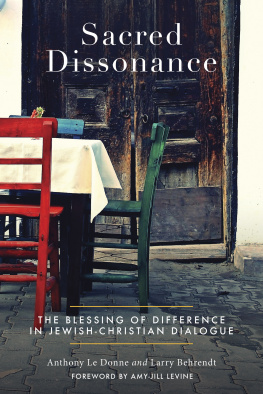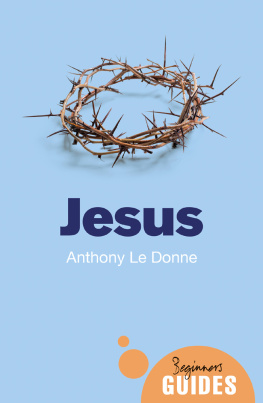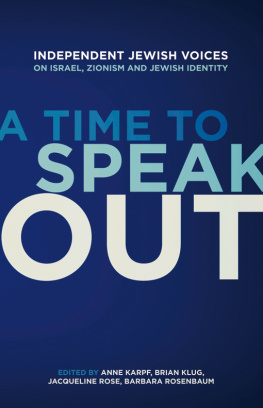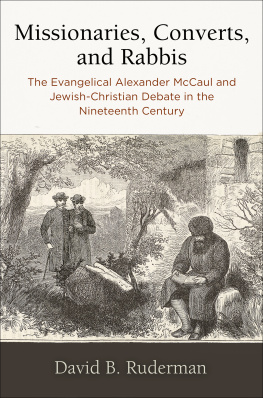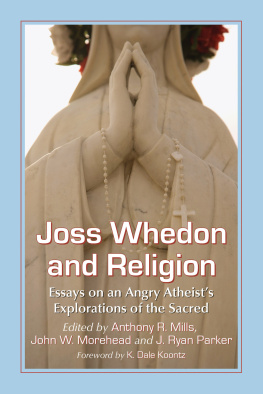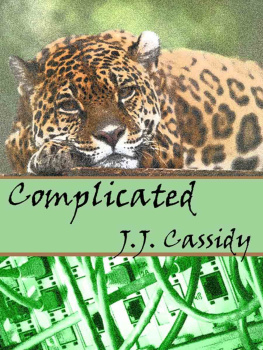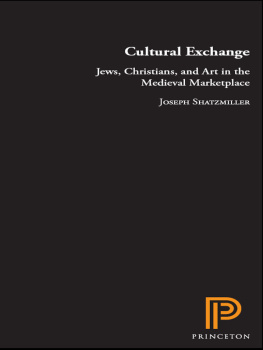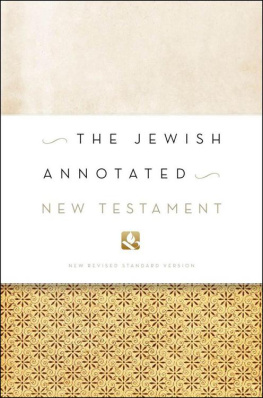Foreword
Amy-Jill Levine
Academics have debates. The academic life is often a blood sport where careers begin at a defense and the battles continue through tenure and promotion. When academics debate, the result can be a negative review, a quashed grant application, or an attack at a conference.
Participants in formal gatherings have dialogues. Dialogue participants tend to avoid very difficult subjects lest a comment be taken as an insult. Much of their kind of dialogue is show-and-tell rather than give-and-take. In dialogue, speakers often agree to disagree, and then move quickly to the next subject.
Friends have conversations. If the friendship is strong enough, the conversations move beyond politeness to challenge and even discomfort. Friends can say, I really dont like this about your... and we need to talk about it. They can enter this dangerous ground because they know that the friendship will continue.
In this remarkable study, Anthony Le Donne and Larry Behrendt allow us to listen to their conversations and invite us to participate in them. While Anthony and Larryby the second chapter, readers will likely feel that they are friends of and on a first-name basis with the authorsare friends, they often disagree, fiercely, even as they learn more about and grow closer to each other. They have academic bona fides, which they do display on occasion, but they also engage in conversation, which means they talk to each other and not past each other. Anthony and Larry are at the vanguard of a new genre, the Jewish/Christian schmooze.
With the trust built up over years, they have moved Jewish/Christian relations beyond the academic debate supported by lots of footnotes and beyond the dialogue of Lets get to know each other but lets go carefully and Lets see if I can understand your belief and practice in my own terminology. They take the conversation to the risky familiarity of Heres what bothers me about what (some) Christians, or (some) Jews, say or do; indeed, heres what bothers me about what you just said. Their comments and their responses ring true to me.
In conversation marked by pain, pathos, and occasional puns, they ask what individual Christians and Jews, and what they themselves, really think about each other, and each others traditions. They discuss not just the Shoah, but how to talk about it, including its distinct effects on Jewish and Christian social and personal memory. Larry forthrightly expresses his concerns about what he sees as the dangers in Christianity, from evangelical attempts to convert Jews to Gospel passages he thinks should be excised. Anthony opens with two forceful, and dissonant, points: Christians generally like Jews and many of those same Christians have anti-Jewish tendencies. He then takes us through how, from ignorance, such tendencies manifest themselves.
Anthony notes, correctly, that the academic study of Jews and Judaism is insufficient preparation for real-world encounters; Larry observes, correctly, that as a whole, most Jews would prefer to be left alone rather than to engage Christians in an interreligious dialogue, let alone interfaith dialogue where the questions of G-d and salvation are of no interest to some Jews. They talk about alienation from and disappointment with their own communities; they talk about wrestling with Scripture, and then they get into the ring to show how this wrestling is done.
The schmoozing, because it is personal, allows for moments where one participant is jarred by what is normative for another: Anthonys shock at armed guards at Larrys synagogue coupled with his recognition that, statistically, there are more anti-Semites in the world than there are Jews; Larrys experience at a bring a friend to church day, where songs of Jesus sufferingthirty minutes of angst as he puts itmade going to church feel like a trip to the intensive care ward. And yet, he also realized how meaningful and sustaining that same church experience was for members of the congregation.
At points, I laughed out loud. Larrys comments about the pervasive but nominal Christianity of television characters neatly summarize network offerings in the 50s and 60s. As he puts it, At least I assumed they were Christian; they certainly werent Jewish. But they never built a church on Gilligans Island. Well, of course not, is my (Jewish) response: had there been Jews, or at least Jewish-identified characters on the island, not only would they have figured a way off, they would not have booked a three-hour cruise on the Minnow in the first place. The producer of GilligansIsland, Sherwood Schwartz, planned to be a medical doctor, but the quota system restricting Jews kept him out of NYU Medical School. Tina Louise (Ginger) and Natalie Schafer (Lovey)both Jews. Is this television show an instance of Jews making fun of goyishe stereotypes? Is it an example of Jews attempting to show how disparate people create community? Is my first question anti-Jewish? Is the second apologetic? Larry and Anthony encourage the questions.
Anthony notes that many Christians have never met a Jew. On the other hand, its likely that these Christians have seen Jews, a lot. We could start with pictures of Jesus (okay, most of the time he doesnt look Jewisha clich that requires some parsing of its own), and work down (up?) to Bob Saget, Bernie Sanders, Adam Sandler, David Schwimmer, Jerry Seinfeld, William Shatner, Sarah Silverman, Gene Simmons, Steven Spielberg, Ben Stiller, Howard Stern, John Stewart, Barbara Streisand... and those are just under S. I also note that Phil Silvers did appear on Gilligans Island. How do Christians engage in dialogue, let alone schmoozing, when there are no Jews in the neighborhood, or the county, or pretty much the state? Larry and Anthony give a sense of what this conversation would sound like.
Anthony and Larry not only explain but also show why such conversation, taking place today when the fastest growing religious group is the nones, is necessary. Knowledge of the other produces better knowledge of the self: learning about Judaism makes Anthony a better Christian; learning about Christianity makes Larry a better Jew. They ponder, with difficulty, the analogy of the Shoah to Jesus Crucifixion (note the capitalization of both terms); they ask questions of Christian complicity and Christian denial, even as they question the problematic typecasting of Jews as victims and Christians as perpetrators.

